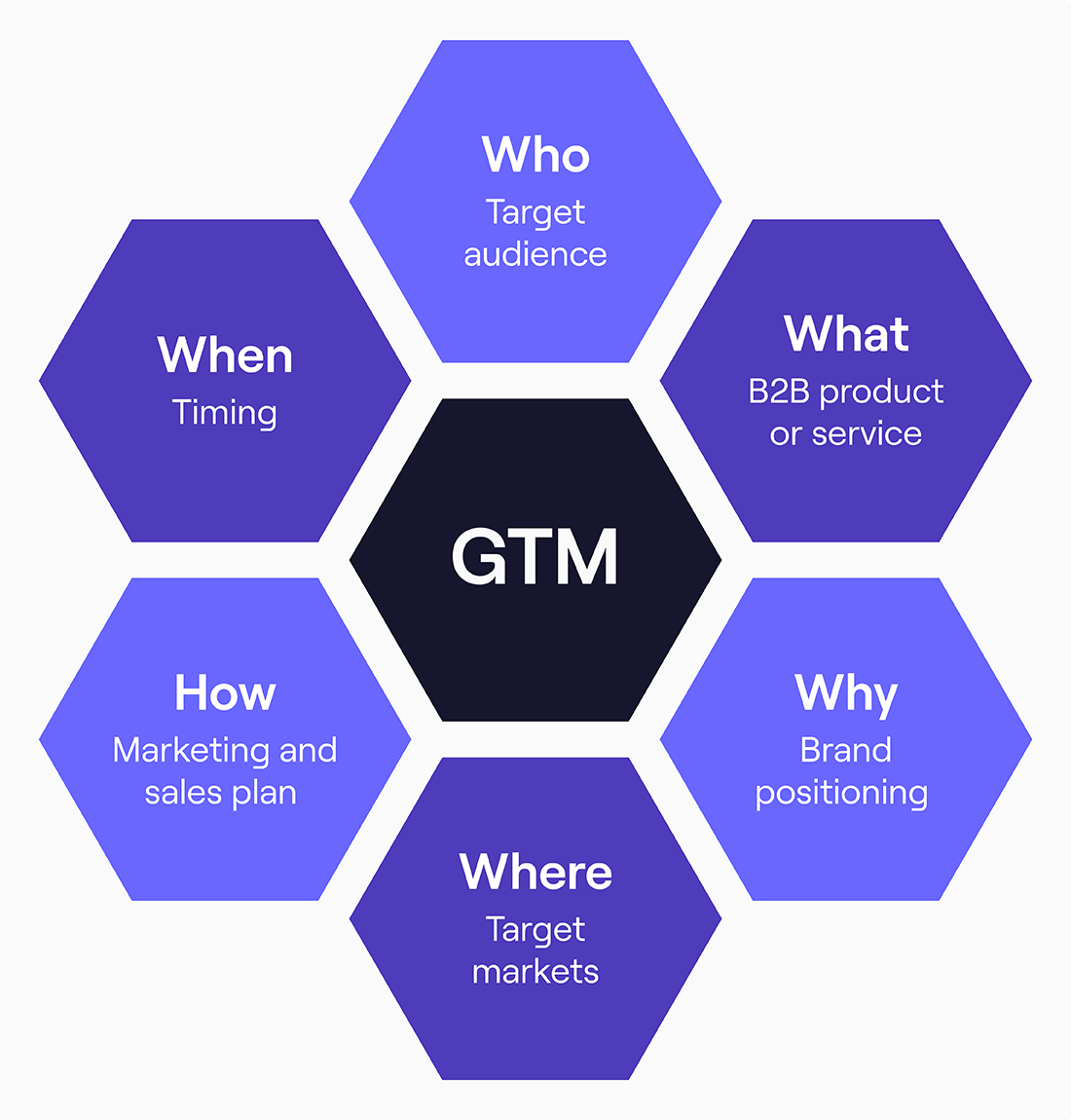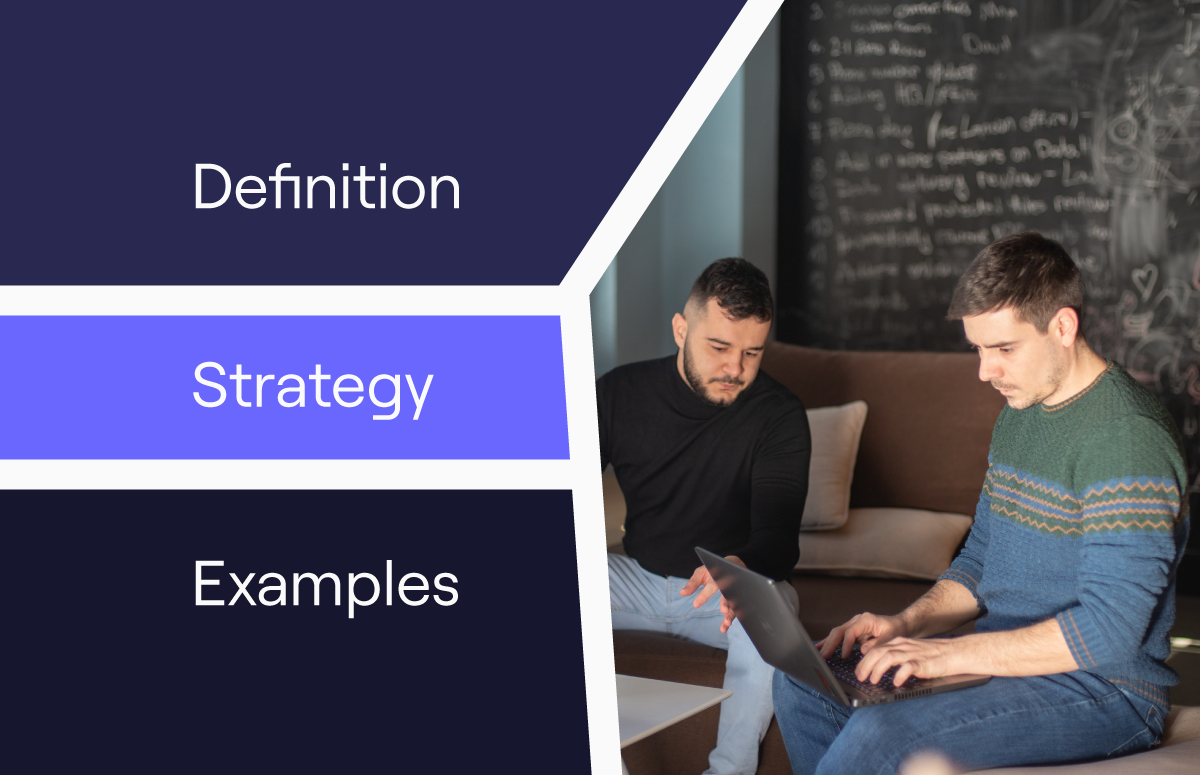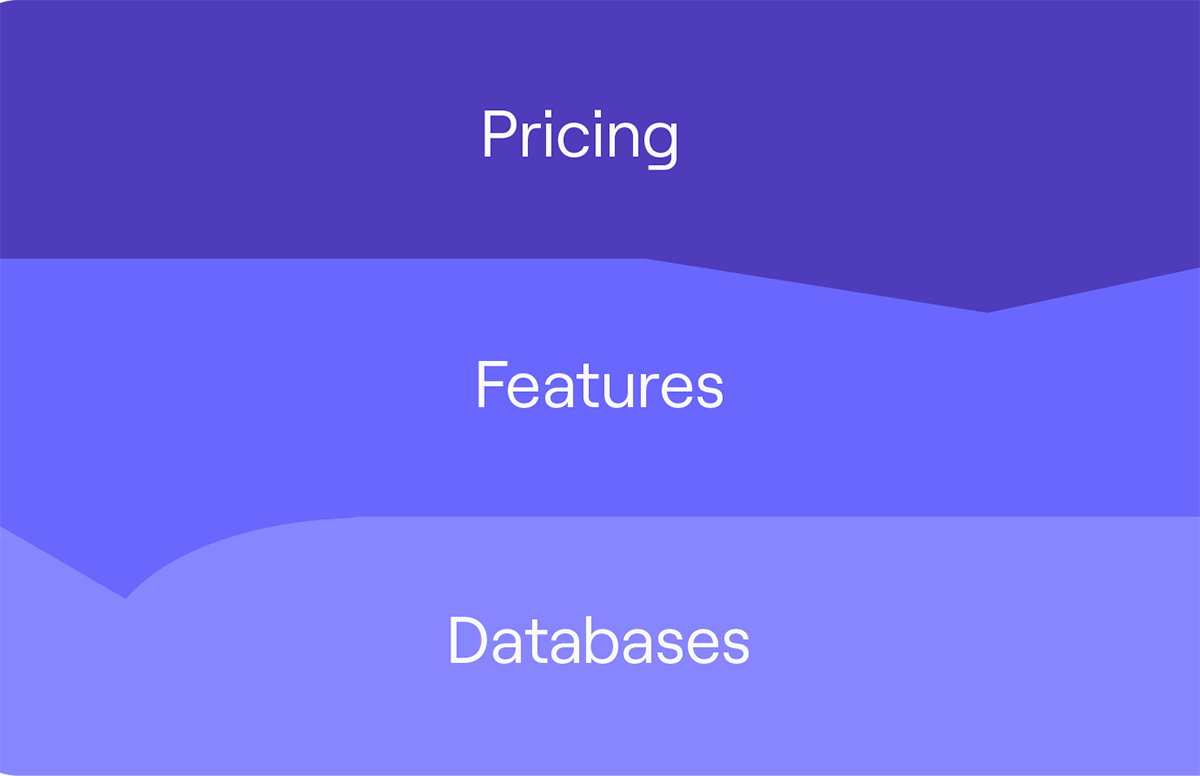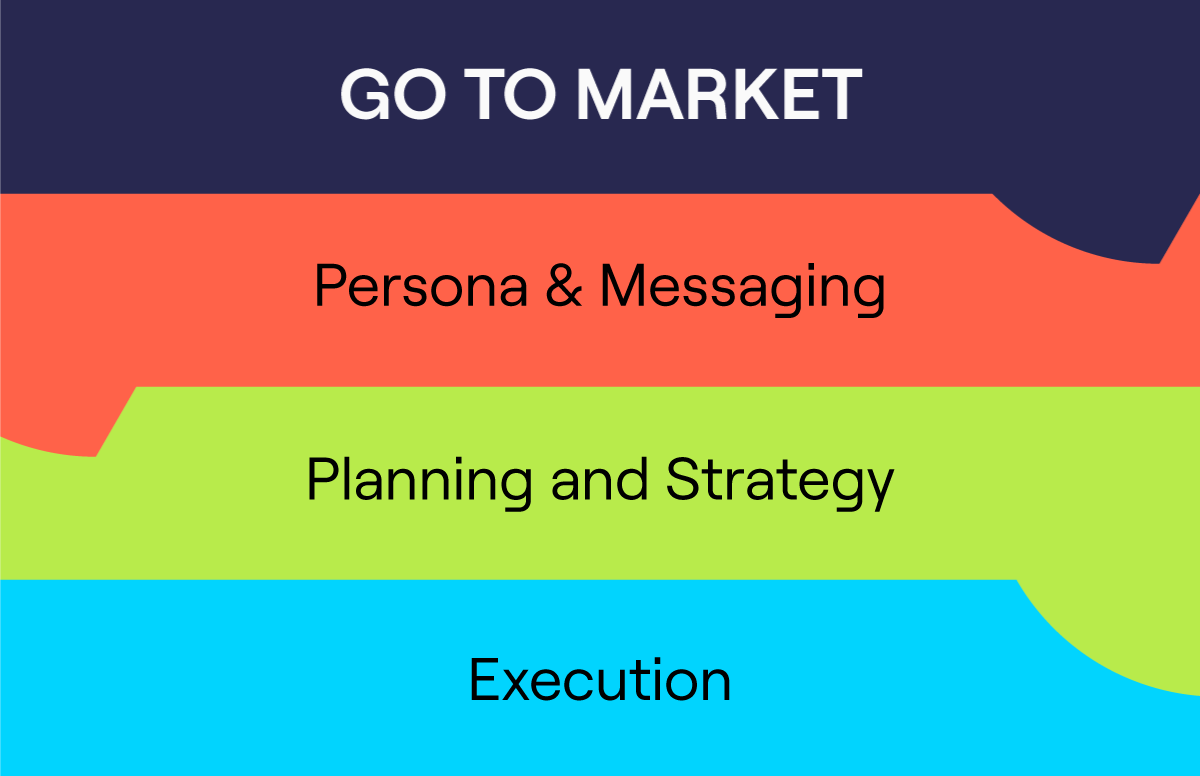SaaS Go-to-Market Strategy: Steps, Examples and Template
In the highly competitive world of B2B technology, powering up a SaaS go-to-market strategy will define your success.
Whether you’ll market with your initial offering or introduce new products, you must approach your activities with a strategy that considers all the nuances and intricacies required for GTM.
Just like gaming, mad skills aren’t enough in a strategy game. You need to have a plan. This article shares GTM strategy cheat codes that’ll change how you sell SaaS.
Let’s power up 🔋
What is a SaaS go-to-market strategy?
A GTM strategy for SaaS companies is a plan to launch new products or features, attract customers, outshine competitors, and boost revenue.
Imagine the SaaS landscape as a sprawling map filled with opportunities and obstacles. As you navigate it, you’ll discover that things change quickly and often, so agility is one of your most vital assets.
SaaS has changed the way people and organisations access and use software. Old-school software setups are ancient history, with clunky installations and hefty price tags.
The business model of delivering software over the Internet has meant that the service behind the products has become as important as the products themselves. To win here means standing out with innovation, top-notch quality, and customer-centricity.
Picture this:
You’ve built a groundbreaking SaaS product and are confident it’s a game-changer.
But wait, how do you ensure it reaches the right audience? And how do you make sure you achieve the ROI to make it profitable?
Enter the SaaS go-to-market strategy, your roadmap to success in the digital arena.
Think of it like your master plan, your secret weapon in this business battlefield.
It’s not just about launching your product; it’s about orchestrating well-thought-out marketing tactics, sales manoeuvres, and customer engagement strategies aimed at captivating your audience and leaving your competitors having to reboot.
The actual effectiveness of this strategy is that all stakeholders in your business must buy into and help implement it.
This means complete alignment of marketing, sales, and product teams, all pulling in the same direction and following the strategy.

How is a go-to-market strategy for SaaS different from a B2B marketing strategy?
There are noticeable differences when discussing SaaS GTM marketing versus a typical B2B marketing strategy.
While both aim to drive sales, SaaS go-to-market strategies are more about selling the experience than the product.
You’re not just selling software; you’re fostering relationships, delivering continuous value, and nurturing a community of loyal advocates.
This means your marketing isn’t just about getting a once-off sale; it’s about keeping your customers loyal and constantly justifying value.
So, expect to see a lot more emphasis on keeping customers happy, offering great support, and rolling out regular updates to keep things fresh.
With a digital product offering, you can make changes and turn around iterations to quickly meet customer demands. So adaptability and data sensitivity are even more critical.
Check out how Antoine Cornet, Head of Revenue Operations at Cognism, built and scaled Cognism’s GTM strategy 👇
4 advantages of a B2B SaaS go-to-market strategy
1. Scalability and flexibility
Companies in this category enjoy unparalleled scalability and flexibility compared to traditional business models. With digital products, you can scale solutions to accommodate growing demand and reach new markets without the need for physical infrastructure or extensive overhead costs.
This scalability means you can rapidly expand your customer base and revenue streams, quickly adapting to evolving market conditions and customer needs.
Additionally, the flexibility of SaaS platforms enables agile development cycles, quick feature updates, and customisation options that drive innovation and competitiveness.
2. Subscription-based revenue model
This SaaS GTM model has many advantages over traditional one-time sales models. You can establish predictable revenue streams and long-term customer relationships by providing customers with ongoing access to software features and services for a recurring fee.
This allows for better financial planning, investment in product development, and strategic decision-making.
A subscription model also fosters customer loyalty and retention, incentivising customers to continue their subscriptions to maintain access to essential tools and services. With this, you can reduce churn and increase customer lifetime value.
3. Data-driven insights and analytics
B2B SaaS companies have access to a wealth of data and analytics that provide valuable insights into customer behaviour, usage patterns, and product performance.
With advanced analytics tools and tracking sales metrics such as user engagement, conversion rates, and customer satisfaction scores, you can better understand your target market and optimise your SaaS go-to-market strategies accordingly.
These data-driven insights enable informed decision-making, allowing you to identify areas for improvement, prioritise feature development, and personalise marketing and sales efforts.
Ultimately, data-driven decision-making enhances the effectiveness and efficiency of go-to-market initiatives, driving business growth and success.
4. Continuous innovation and iteration
Unlike traditional software products with lengthy development cycles and periodic updates, SaaS solutions can undergo rapid iterations and improvements.
This agility enables B2B SaaS companies to respond quickly to changing customer needs, technological advancements, and competitive pressures. So it’s easier to stay ahead of the curve and deliver value to customers faster.
By embracing a culture of innovation and iteration, you can drive product innovation, enhance competitiveness, and maintain relevance in an ever-evolving marketplace.
How to create a go to market strategy for B2B SaaS companies?
Let’s look at the go-to-market strategy steps for SaaS 👇
Step 1: Understand your market landscape
Do thorough market research
Begin by conducting in-depth research into your target market.
Explore industry reports, customer surveys, and competitor analyses to gain insights into market trends, customer needs, and competitive positioning.
Look for gaps and opportunities that your SaaS solution can address.
Define your ideal customer profile (ICP)
Develop a detailed understanding of your ideal customer profile.
Consider demographic factors such as industry, company size, geographic location, and job role, as well as psychographic factors such as pain points, goals, and challenges.
Use this information to create nuanced customer personas that guide your SaaS marketing and sales efforts.
Step 2: Define your value proposition
Crafting a compelling message
Your value proposition is the heart and soul of your B2B SaaS go-to-market strategy. It should clearly articulate your SaaS solution’s unique benefits and advantages compared to competitors.
Focus on highlighting key features, solving specific pain points, and delivering measurable outcomes for your B2B target audience.
Product development and differentiation
To ensure your SaaS product stands out in a crowded market, leverage advanced product development software to drive differentiation and innovation. By focusing on these key areas, you can position your offering uniquely and effectively.
Conduct user testing, gather feedback from beta users, and iterate on your product to ensure it meets the needs of your target audience.
Emphasise features and functionalities that set your product apart and provide tangible value to customers.
Step 3: Plot your strategic course
Developing a comprehensive go-to-market strategy for B2B SaaS
Your SaaS GTM motion should encompass many considerations, including messaging, positioning, pricing, distribution channels, and promotional tactics.
Take a holistic approach to strategy development, considering how each element interacts and contributes to overall success.
- Messaging strategy: Develop a compelling narrative that resonates with your target audience and communicates the unique value proposition of your SaaS solution. Tailor your messaging to different buyer personas and stages of the buyer’s journey, ensuring consistency and relevance across all touch points.
- Channel strategy: Identify the most effective channels for reaching and engaging your target audience. Consider a mix of digital channels such as social media, content marketing, email marketing, search engine optimisation (SEO), paid advertising, and traditional channels such as industry events, conferences, and direct mail.
- Pricing strategy: Determine a pricing model that aligns with the value delivered by your SaaS solution and reflects the willingness of your target market to pay. Consider factors such as competitive pricing, value-based pricing, subscription models, and tiered pricing options to optimise revenue generation while remaining competitive.
- Distribution strategy: Explore different distribution channels and partnership opportunities to maximise the reach and accessibility of your SaaS product. Consider partnering with resellers, integrators, and channel partners to extend your market reach and tap into new customer segments.
Step 4: Assemble your dream team
Building a skilled and diverse team
A go-to-market strategy for a B2B SaaS company will only be as effective as the team that executes it.
Build a diverse team of talented individuals with marketing, sales, product development, customer success, and analytics expertise.
Look for team members who bring complementary skills, perspectives, and experiences to the table, fostering collaboration and innovation.
Cultivating strategic partnerships and alliances
Forge strategic partnerships and alliances with other businesses, industry influencers, and thought leaders who can amplify your message and extend your reach.
Identify potential partners who share your values and target similar customer segments, exploring opportunities for co-marketing, co-selling, and co-development initiatives that create mutual value.
Step 5: Launch and navigate your strategy
Executing a flawless launch
A successful go-to-market strategy for SaaS products hinges on a well-executed product launch.
Coordinate cross-functional efforts across marketing, sales, product, and customer success teams to ensure a seamless and impactful launch experience.
Develop a comprehensive launch plan with clear objectives, timelines, and success metrics. Monitor performance closely to identify areas for optimisation and improvement.
Customer acquisition and retention strategies
Focus on acquiring new customers and retaining existing ones by delivering exceptional customer experiences and value.
Develop targeted marketing campaigns, personalised sales outreach, and proactive customer support initiatives to engage and delight customers at every stage of the customer lifecycle.
Leverage customer feedback and data analytics to identify opportunities for improvement and optimisation, continuously iterating on your strategy for success.
Continuous improvement and optimisation
Success in the B2B SaaS market requires adaptation, innovation, and optimisation.
Establish a culture of continuous improvement within your organisation, encouraging experimentation, learning, and agility.
Monitor market trends, competitive dynamics, and customer feedback closely. Leverage data-driven insights to inform strategic decisions and refine your go-to-market approach over time.
Crafting a go-to-market strategy for a B2B SaaS company is a complex and multifaceted endeavour.
Still, by following these detailed steps and approaches, you’ll be well-equipped to confidently navigate the market landscape and achieve sustainable growth and success.
You may also be interested in building a compliant GTM tech stack.
Free SaaS go-to-market strategy template
Here’s an easy “cheat code” to get you started in the form of a SaaS go-to-market strategy template. Click the banner below to get your strategic ball rolling 👇
SaaS go-to-market strategy examples to learn from
Let’s find inspiration from some other successful players in the game. Take a look at these SaaS go to market strategy examples 👇
Example 1: Dropbox
A cloud-based file storage and sharing platform, Dropbox’s SaaS GTM strategy emphasised a freemium model, referral programs, and strategic partnerships.
Freemium model
Offering a free version of its platform (with limited storage space) enticed users to sign up and try the service. This freemium model was a powerful lead-generation tool that drove user acquisition and adoption.
Referral programs
It incentivised users to refer friends and colleagues with the promise of bonus storage space for both parties. This referral program fuelled viral growth, turning existing users into brand advocates and organically expanding Dropbox’s user base.
Strategic partnerships
It partnered strategically with companies like Microsoft and Adobe to integrate its platform into popular productivity tools. These partnerships enhanced Dropbox’s value proposition and market reach, attracting new customers and driving revenue growth.
Example 2: Salesforce
A cloud-based customer relationship management (CRM) platform, Saleforce’s SaaS GTM strategy focused on thought leadership, community building, and strategic acquisitions:
Thought leadership
It invested heavily in data quality and accuracy, leveraging machine learning algorithms and human verification processes to maintain a reliable and up-to-date contact database. This ensured that the sales and marketing teams used accurate and actionable intelligence for prospecting and SaaS lead generation.
Community building
It built a vibrant community of users, developers, and partners through events, forums, and online communities. This community-centric approach fostered collaboration, knowledge sharing, and advocacy, driving user engagement, retention, and loyalty.
Strategic acquisitions
It expanded its product portfolio and market reach through strategic acquisitions of companies like MuleSoft and Tableau. These acquisitions broadened the range of its solutions for data integration, analytics, and business intelligence, which created added value for customers.
Example 3: Shopify
A leading e-commerce platform that enables businesses to create and manage online stores, Shopify focused on simplicity, scalability, and ecosystem expansion:
Simplicity
Its highly user-friendly platform has intuitive tools and templates that make setting up and customising an online store easy. This simplicity meant businesses of any size could launch and manage their e-commerce operations without technical expertise, increasing adoption and retention.
Scalability
Shopify made its solutions and infrastructure scalable to support businesses at every growth stage, from startups to enterprise-level organisations. Whether processing a few orders per day or managing high-volume sales during peak seasons, it tailored its offering to meet the needs of specific segments.
Ecosystem expansion
It cultivated an ecosystem of developers, designers, and partners to create apps, themes, and integrations that extend the functionality of Shopify’s platform. This collaboration system improved the experience of its offering and expanded its reach through the partners it integrated with.
SaaS go-to-market key takeaways
It’s time to tally our points and reflect on our learning, like in a well-crafted game, where each level brings new challenges and rewards.
Getting ahead in SaaS requires:
- Researching and understanding the market you’d like to enter into.
- A well-defined value proposition.
- A strategic data-driven marketing strategy.
An important point to remember is that the game is never truly over with an enterprise SaaS go-to-market strategy. It’s an ongoing process fuelled by constant incremental improvement.
You’ve already made a great start by equipping yourself with some insights needed to embark on a market play of this nature. Now, it’s time to put them into practice.
Optimise your GTM strategy
Stuck on your GTM strategy? Our plays hub is full of GTM cheat codes for:
- SDRs/AEs/Sales Managers.
- Marketers.
👇 Click the banner to see the GTM plays.



